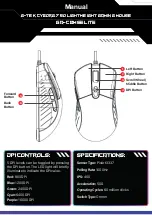
NOTE:
Regardless of the volume space that is allocated for shadow copies, there is a maximum of 64 shadow
copies for any volume. When the 65th shadow copy is taken, the oldest shadow copy is purged.
The minimum amount of storage space that can be specified is 350 megabytes (MB). The default
storage size is 10 percent of the source volume (the volume being copied). If the shadow copies are
stored on a separate volume, change the default to reflect the space available on the
storage
volume
instead of the
source
volume. Remember that when the storage limit is reached, older versions of the
shadow copies are deleted and cannot be restored.
CAUTION:
To change the storage volume, shadow copies must be deleted. The existing file change history that
is kept on the original storage volume is lost. To avoid this problem, verify that the storage volume
that is initially selected is large enough.
Identifying the storage area
To store the shadow copies of another volume on the same file server, a volume can be dedicated
on separate disks. For example, if user files are stored on
H:\
, another volume such as
S:\
can be
used to store the shadow copies. Using a separate volume on separate disks provides better
performance and is recommended for heavily used storage systems.
If a separate volume will be used for the storage area (where shadow copies are stored), the maximum
size should be changed to
No Limit
to reflect the space available on the storage area volume instead
of the source volume (where the user files are stored).
Disk space for shadow copies can be allocated on either the same volume as the source files or a
different volume. There is a trade-off between ease of use and maintenance versus performance and
reliability that the system administrator must consider.
By keeping the shadow copy on the same volume, there is a potential gain in ease of setup and
maintenance; however, there may be a reduction in performance and reliability.
CAUTION:
If shadow copies are stored on the same volume as the user files, note that a burst of disk input/output
(I/O) can cause all shadow copies to be deleted. If the sudden deletion of shadow copies is
unacceptable to administrators or end users, it is best to use a separate volume on separate disks to
store shadow copies.
Determining creation frequency
The more frequently shadow copies are created, the more likely that end users will get the version
that they want. However, with a maximum of 64 shadow copies per volume, there is a trade-off
between the frequency of making shadow copies and the amount of time that the earlier files will be
available.
By default, the storage system creates shadow copies at 0700 and 1200, Monday through Friday.
However, these settings are easily modified by the administrator so that the shadow copy schedule
can better accommodate end user needs.
File server management
64
Summary of Contents for StorageWorks X3000
Page 12: ...12 ...
Page 22: ...Installing and configuring the storage system 22 ...
Page 40: ...Storage system component identification 40 ...
Page 110: ...Troubleshooting servicing and maintenance 110 ...
Page 118: ...Support and other resources 118 ...
Page 140: ...Italian battery notice Japanese battery notice Regulatory compliance notices 140 ...
Page 141: ...Spanish battery notice HP X1000 and X3000 Network Storage System User Guide 141 ...
Page 142: ...Regulatory compliance notices 142 ...
















































